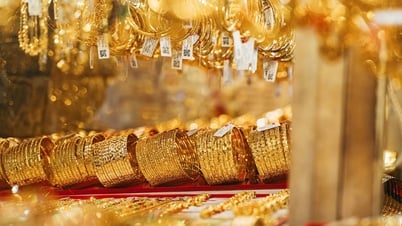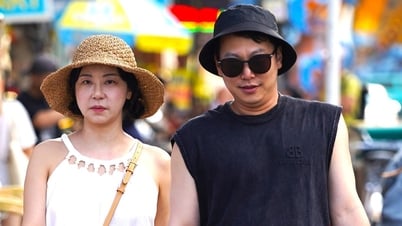
Author Aldo Leopold - one of the most influential people in the history of environmental ethics - Photo: Aldo Leopold Foundation
This scientist wrote the above preface to one of the two most notable environmental books of the 20th century on March 4, 1948, and died less than a month later.
A Sand County Almanac and Sketches Here and There was first published in 1949. After more than 70 years, it has sold more than 2 million copies worldwide and remains valuable.
A wonderful, poetic journey
Reading The Almanac of the Sand Wind , one must occasionally stop and imagine what a mouse upset by the melting snow, a dove's free sky, the departure of an ancient oak tree, or a graceful plover with folded wings would look like.
Then who knows, maybe there is someone like the writer, who longs to go into the wilderness, to immerse himself in the free, lively and vibrant atmosphere of nature, lying with his eyes looking up at the endless blue sky.
Even those who live on the earth but whose hearts do not follow the earth, through Aldo Leopold's story, also raise certain vague yet clear questions.
The first part of the Sand Wind Almanac takes readers on a journey through 12 months of the year.
Aldo Leopold recorded his seasonal observations of the landscape surrounding his Wisconsin farm. Not only did he paint a vivid picture of natural cycles, he also emphasized the complexity and interconnectedness of ecosystems.
In the second part, he tells of his travels to other wild lands. There is an epic of a swamp, glaciers flowing down from the North, the Sand Winds - where every April the white flowers bloom in full bloom under the sun on the gravelly land.

In 1990, the American Society for Natural Science voted Rachel Carson's The Sands Almanac and Silent Spring as the two most valuable and notable books on the environmental topic in the 20th century - Photo: Publishing House
Leopold spoke enthusiastically about the special birds found only in the Sand Winds: the brown sparrow fell in love with the dwarf pine, the sandhill crane loved solitude, and the woodcock chose to make its nest only because it could stretch its wings in that barren place.
Turning the pages of a scientific essay steeped in contemplative literary language, the reader slowly and frantically experiences the rhythm of the world that Aldo describes. It is both violently beautiful and painful.
The Sand Wind Almanac paints a stunning portrait of a wild world whose creatures are threatened by the encroachment of human culture even though it was written more than 70 years ago.
Pioneer ethics
But the third part , The Banquet , is the most highly regarded. In this part, Aldo Leopold presented a then revolutionary concept related to "land ethic".
Leopold argued that humans needed to expand their moral scope to include land, animals, plants, and all components of the ecosystem.
He called for a shift from the role of "conqueror" of nature to the role of "citizen" of the ecological community.

According to information from the publisher Oxford University Press, to date the book has sold more than 2 million copies worldwide. Over the past 76 years, it has been translated into many languages and reprinted continuously in many countries around the world - Photo: Illustration by Danielle Lamberson Philipp
"Until now," he said, "we have no moral principles to define the relationship between man and the land, as well as with the animals and plants that grow on it. The land, like Odysseus's female slaves, is still only property.
Our relationship to land remains largely economic , involving privileges rather than responsibilities."
Leopold spoke the truth in the 1940s. It remains a global problem today.
Source: https://tuoitre.vn/nien-lich-mien-gio-cat-cua-ke-khong-the-thieu-thien-nhien-20250525092800572.htm




![[Photo] The coffin of former President Tran Duc Luong arrives in Quang Ngai](https://vphoto.vietnam.vn/thumb/1200x675/vietnam/resource/IMAGE/2025/5/25/1f1aca0d92ab47deae07934e749b35e6)
![[Photo] Festival of accompanying young workers in 2025](https://vphoto.vietnam.vn/thumb/1200x675/vietnam/resource/IMAGE/2025/5/25/7bae0f5204ca48ae833ab14d7290dbc3)

![[Photo] President Luong Cuong receives Lao Vice President Pany Yathotou](https://vphoto.vietnam.vn/thumb/1200x675/vietnam/resource/IMAGE/2025/5/25/958c0c66375f48269e277c8e1e7f1545)

















































































Comment (0)